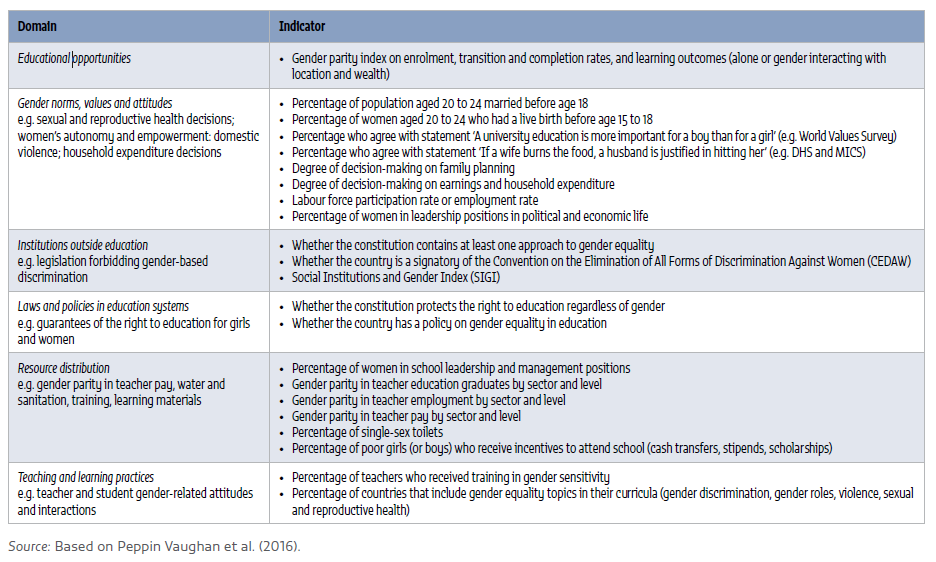Monitoring gender equality in education
Under the 2030 Agenda for Sustainable Development, a new education monitoring framework has been established, replacing the framework set up under the Millennium Development Goals (MDGs). The new system uses a much richer set of information sources than the one it replaced, casting its net wider and aiming to match the ambition of the SDG targets. Even if it can only scratch the surface of the core education and lifelong learning questions related to sustainable development, the new framework necessitates a major mobilization of resources in order to set standards and deploy appropriate tools, especially in capturing different aspects of inclusion and equity.
In assessing gender equality, the SDG 4 monitoring framework makes one important step forward from MDG 3, as shown in the set of 11 SDG 4 global indicators adopted by the United Nations General Assembly in September 2017. Under MDG 3, gender parity was monitored only in primary, secondary and tertiary education enrolment and adult literacy. But under SDG 4, all indicators are to be disaggregated by sex where possible (Table 1). Indicator 4.5.1 sets out a requirement for a gender parity index for all indicators that can be disaggregated reiterated in references to disaggregation ‘by sex’ in other indicators (e.g., in indicator 4.1.1, etc.).
For many of the global indicators, further methodological work is needed. The Inter-Agency and Expert Group on SDG Indicators, set up by the United Nations Statistical Commission to oversee the development of the SDG monitoring framework, has adopted a three-tier classification, depending on established methodology and data coverage. For the education goal, three indicators are identified as tier I indicators (having an ‘established methodology … and data regularly produced by countries’), four as tier II indicators (an ‘established methodology… but data are not regularly produced by countries’) and two as tier III indicators (‘no established methodology’). Two indicators have been classified at multiple levels. However, even where indicators are not fully defined, it is still possible to report on gender disparities.
In spite of this progress, the monitoring framework does not go far enough; a complete monitoring framework addressing the challenge of gender equality in education would need to be much broader. Equalizing education opportunities between males and females, notably in terms of participation and learning outcomes, is necessary but not sufficient for realizing gender equality in education. Indicators from at least five more domains are needed to frame the issue: gender norms, values and attitudes (many of which can be influenced through education); institutions outside the education system; laws and policies in education systems; resource distribution; and teaching and learning practices (Unterhalter, 2015).
The 2016 Global Education Monitoring Report recognized this weakness and introduced an extended framework for monitoring gender equality in education (Table 2). Although systematically addressing indicators across all domains is beyond the scope of this report, the review selectively addresses indicators outside the educational opportunities domain.
This section of the review addresses gender disparities in participation in education, in learning and skills development and in access to leadership positions. Then, it describes the role of education in some SDGs beyond SDG 4.



